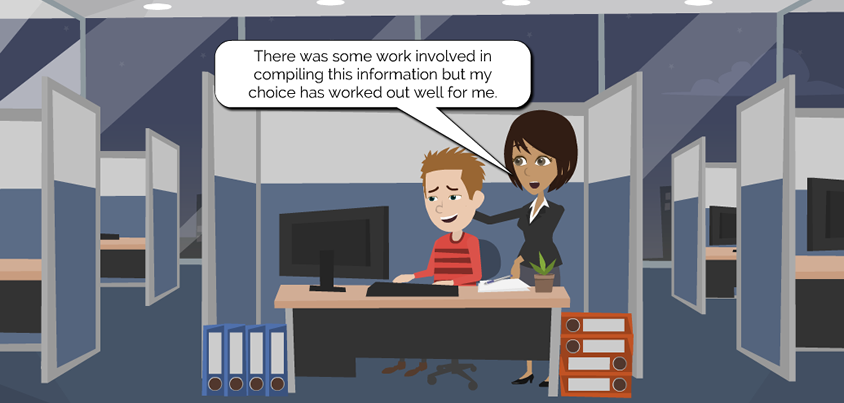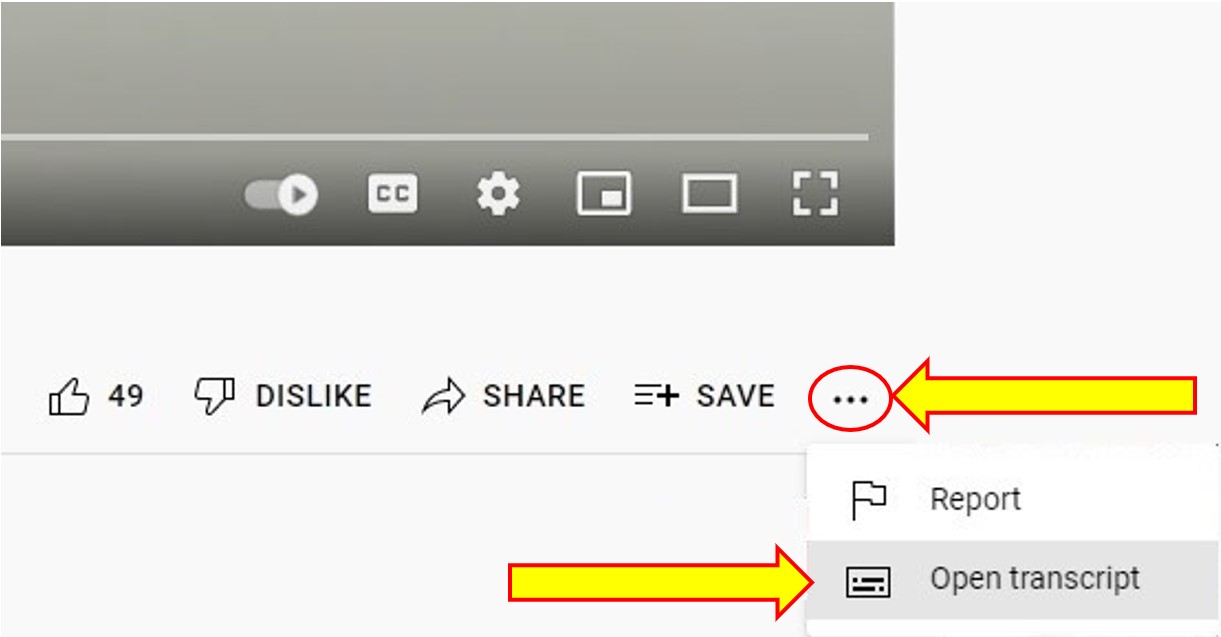Module 02: Research and Exploration
2.5 Decision-Making
Now that you have gathered information online and in more active ways, you might be ready to make some decisions about what steps to take next. For many people, making decisions is hard! It means giving up options and worrying about alternative roads not taken.
![]() Your Turn!
Your Turn!
Let’s start by reflecting on how you have tended to make career decisions in the past. Some people tend to make decisions on a whim while others spend considerable time researching possibilities.
Use these questions to guide your reflection on how you’ve made decisions in the past:
- How have you made career decisions in the past? What do you consider? Who influences your decisions? What approach do you take?
- In what ways has your approach to your career decisions been effective? (in what ways has it worked?)
- What have you learned about how you might want to approach career decisions differently in the future?
- What would you need to do to make these changes?
Example:
| Decision-Making Self Assessment Question | Sample Answer |
|---|---|
| How have you made career decisions in the past? | I decided on my program because I did a co-op in high school in a childcare setting and liked it so thought Early Childhood Education would be a good fit. |
| In what ways has your approach to your career decisions been effective? | I knew I was going into a field that I enjoy because I had experience in the field which helped me see it from the inside. |
| What have you learned about how you might want to approach career decisions differently in the future? | Well, other than doing co-op in high school, I didn’t do additional research: for example, what salary could I make, whether there are jobs, and I didn’t look at any other programs. So, the next time I need to make a career decision, I’ll do a bit more research into it and make sure to look at a few more options. |
| What would you need to do to make these changes? | I would consult online resources for finding salary and labour market info. I would want to do more brainstorming and searching for related occupations. Also, I’d talk to people who work in the fields I’m considering. |
We often think about a career decision as a one-time, huge decision about which career path to take. But in reality we make career decisions all the time with a lot of opportunity to adjust and adapt as we learn more about ourselves and the world of work.
Some decisions you may currently be working on are:
- Should I pursue further education?
- Which program should I choose?
- What career area or occupation do I want to pursue?
- What industry and job title would best suit me?
![]() Decision Making Matrix Exercise
Decision Making Matrix Exercise
Use the chart below to guide your career decision making process. The factors listed could be replaced with other factors (such as income, prestige, length of education/training, PR requirements etc.), which might be more important to you.
- List between 3-5 career options (these could be programs, career paths, specific jobs, etc.) of interest that you have been researching,
- Look at the 5 factors below and after carefully researching each factor, assign a number on a scale from 1 to 10.
- Going through this process may help to clarify the option that is best for you right now (it could be the option with the highest score but it could also be that, through the process, you find that one option just feels better to you).
Here is the downloadable version of the Table 2.1 Decision Making Matrix (.docx)
| Table 2.1 Decision Making Matrix | ||||||
|---|---|---|---|---|---|---|
| Occupation
/Factor |
Labour Market /Job Search |
Day-to-Day reality of the job | Lifestyle | Qualifications | Fit with self | Total |
| 1-poor work prospects
10-lots of opportunities, jobs easy to find |
1 – this job/environment will not suit me
10- extremely suitable environment/job duties |
1-will not fit with my lifestyle
10-fits my lifestyle well |
1-I don’t have any related skills or experience, very difficult to acquire
10- I have all the skills and experience needed for this job or easy to acquire |
1- will be a poor fit with my interests, values and personality
10 – excellent fit, will love it! |
||
| Option 1 | ||||||
| Option 2 | ||||||
| Option 3 | ||||||
| Table 2.1 Decision Making Matrix | ||||||
|---|---|---|---|---|---|---|
| Occupation /Factor |
Labour Market /Job Search |
Day-to-Day reality of the job | Lifestyle | Qualifications | Fit with self | Total |
| Option 1 | ||||||
| Option 2 | ||||||
| Option 3 | ||||||
![]() Decision Making Matrix Exercise
Decision Making Matrix Exercise
After you calculate your totals spend some time reflecting on the results. Do they make sense to you? Do they feel right? Sometimes you need to do more research into specific areas to explore various possibilities you’re curious about.
Additionally, to test the “winning” occupation, you can do the following:
Take a moment, close your eyes (if you want to) and imagine yourself doing this job…tomorrow.
- Where are you?
- What are you doing?
- Who are you with?
- What are you wearing?
- Do you like what you see?
Jane Career Decision Making Matrix Example
Jane is talking to a prospective student who is curious to know how she made her decision to go into Office Administration.
Here are all of Jane’s options with total scores. Office Administration received the highest score with 39 points, Vet Technician was next with 31 points and Environmental Technician was last with 28 points.
Here is the downloadable version of the Table 2.1 Decision Making Matrix (.docx)
| Table 2.1 Decision Making Matrix | ||||||
|---|---|---|---|---|---|---|
| Occupation /Factor |
Labour Market /Job Search |
Day-to-Day reality of the job | Lifestyle | Qualifications | Fit with self | Total |
| 1-poor work prospects
10-lots of opportunities, jobs easy to find |
1 – this job/environment will not suit me
10- extremely suitable environment/job duties |
1-will not fit with my lifestyle
10-fits my lifestyle well |
1-I don’t have any related skills or experience, very difficult to acquire
10- I have all the skills and experience needed for this job or easy to acquire |
1- will be a poor fit with my interests, values and personality
10 – excellent fit, will love it! |
||
| Vet Technician | 8 | 2 | 5 | 6 | 10 | 31 |
| Environmental Technician | 5 | 5 | 5 | 4 | 9 | 28 |
| Office Administration | 5 | 7 | 9 | 8 | 10 | 39 |

After doing this exercise you can give an occupation a “subjective” score on a scale from 1-10 based on how it felt in the moment. You can either add this score to the decision-making matrix or simply reflect on it.
And finally, you don’t have to make a final decision regarding which specific job or career area to pursue. It is totally acceptable to have a variety of goals and remain open to various opportunities.
How to Make Quick Decisions
Transcript
To Access the Video Transcript:
1. Click on “YouTube” on the bottom-right of the video. This will take you directly to the YouTube video.
2. Click on the More Actions icon (represented by three horizontal dots)
3. Click on “Open Transcript”

In a world of endless reviews and options, it’s easy to become paralyzed by indecision. Investor and writer Patrick McGinnis shares the dangers of “FOBO” — the fear of better options — and how to overcome it.

